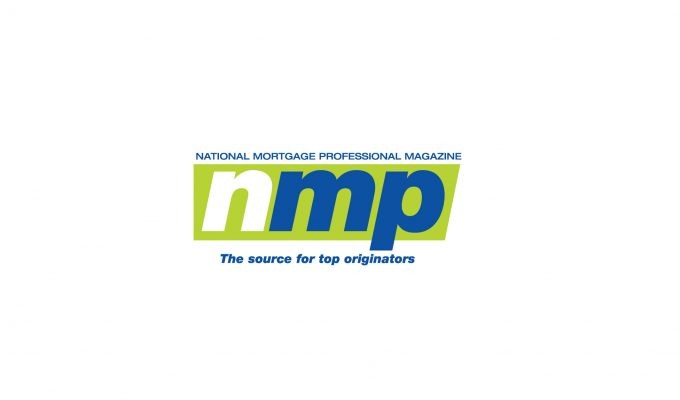
Most people would agree there are few more powerful words in the English language than “yes.” And there are few better times to hear it than when you have spent years working hard and saving money in order to make the biggest financial purchase of your life – buying a home.
Mortgage brokers know this better than anyone. In fact, there’s probably no word mortgage professionals enjoy saying more than “yes,” especially when it’s said to someone who has made the long and arduous journey toward homeownership.
Get the ADvantage
with our loyalty program
Earn and redeem points for valuable benefits for you and your clients
Unlock RewardsIn the years since the Great Recession, however, it has gotten harder to say yes, which is a good and a bad thing. It’s good because lenders are not saying yes to the kind of risky and outlandish loans that nearly tore apart the U.S. economy. But it’s also bad, because lending criteria has tightened so much in recent years that many hardworking people who can now afford to buy and make their mortgage payments are being denied that opportunity.
Fortunately, things are starting to change. Credit is loosening for borrowers who fall outside of the cookie-cutter underwriting guidelines available only to homebuyers with top-tier credit scores, low debt-to-income ratios and consistent income on a weekly or bi-weekly basis, and who have the ability to repay the mortgage with significant savings to reduce risk. These borrowers also fall outside of FHA—homebuyers with lower credit scores, higher risk and the ability to pay FHA mortgage insurance in addition to PITI.
In order for mortgage brokers to not only say yes to more borrowers but to also tailor underwriting to fit the borrower who is slightly outside of the QM box, they’ll need to make non-QM loans a part of their business. And that takes knowing what non-QM loans are and what they are not, as well as dispelling non-QM loan myths and understanding the type of borrowers who need non-QM loans the most.
Forget About Yesterday’s Sub-Prime
The technical definition of a non-QM loan is anything that falls outside the GSE’s Qualified Mortgage definition. When some people hear this, however, they think that means non-QM loans are like Alt-A or subprime loans. Nothing, however, could be further from the truth.
In fact, the average non-QM loan more closely resembles prime non-conforming jumbo loans. Typically, they include lower loan-to-value ratios and still require income verifications, an independent appraisal and good to excellent credit. In other words, they were designed for a completely different borrower profile than the no-job, no-income borrowers that were given financing prior to the Great Recession.
So, who are non-QM loans for? Think of the self-employed mortgage borrowers, who ordinarily have a difficult time qualifying for traditional mortgages. This group alone comprises an enormous segment of the U.S. population. In fact, the number of American workers who describe themselves as freelancers make up 36% of the U.S. workforce, according to a recent survey by UpWork and the Freelancers Union, and their numbers are expected to reach half of the working class in just a few years.
Other non-QM loan candidates are borrowers who operate a sole proprietorship or have contract-based work. Foreign nationals who want to buy property in the U.S. can also qualify for non-QM financing, as well as borrowers who plan to buy investment properties or even condo hotels and multifamily properties.
Need to Change Your Thinking
Once you realize that today’s non-QM loans have nothing to do with yesterday’s sub-prime products, the next step is to understand how to market them. Sadly, many lenders and brokers look at non-QM loans as a fallback option when a borrower doesn’t qualify for an FHA or conventional loan. The reality is non-QM loans are often a better fit for your borrowers than conventional products.
Most brokers are already marketing or even have clients who fall into one of the categories I’ve mentioned above. Being able to provide these customers with non-QM options is just a matter of learning how to spot them and how they are able to qualify.
There are number of ways a lender can validate a borrower’s ability to repay and thus meet Dodd-Frank requirements. Today’s products have many different income verification methods, as mentioned above, as well as different asset, credit and employment requirements.
For example, for self-employed borrowers, lenders can use bank statements as well as profit and loss statements as provided by a licensed tax preparer or CPA to qualify for financing. There is also non-QM financing available that uses the borrower’s income as documented on their 1099 forms over the past two years, which can be verified by an IRS transcript.
Foreign nationals can qualify for non-QM products that allow for flexible, alternative documentation, even if the borrower has no credit score. There are also products available for buyers of investment properties that enable borrowers with significant assets to qualify without income verifications and have interest-only options.
Getting Your Referral Partners on Board
Once you understand what non-QM loans are about and who they are designed for, the next step is to reach out to your referral partners and educate them that these financing options exist. After all, your real estate partners and insurance partners are often the first to know when someone wants to buy a home but doesn’t fall into the current conforming or government loan boxes.
Education of your referral partners is crucial. Without it, there is no way they will be able to even recognize the need for an alternative financing, let alone that there are products available that might be a great fit for one of their clients.
Keep in mind, too, that the volume and types of non-QM loans are growing fast and will continue to do so in the coming years. That’s especially true as the number of self-employed workers grows in the years ahead, as many economists project it will.
At the end of the day, non-QM loans are going to be important to a mortgage broker’s success. These are good, high-quality loans that are documented and vetted just as strongly as traditional loan products. Most importantly, they fulfill unmet borrower needs.
The key to quality performance as a mortgage broker or a loan officer is to match the borrower with the mortgage product that fits best his or her financial portfolio. In some cases, it might be a conforming loan; in others, it could be an FHA loan. And, it very well may be a non-QM loan.
Choose a top nationwide lender that cares about your growth!
Get StartedEntrepreneurs, small business owners, high-income earners who push DTI ratios higher than average and borrowers who had a past crisis they have overcome, only to find a lower credit score, are all part of the homebuying community with the ability to repay a mortgage.
By adopting non-QM loans as another credit option, mortgage brokers can position themselves as a “hero” in the homeownership journey who is willing to go to bat for struggling buyers. Once they help one borrower who thought homeownership was a lost cause, word spreads—and it spreads quickly.
British businessman and philanthropist Richard Branson, founder of the Virgin Group, once said, “I have enjoyed life a lot more by saying ‘yes’ than by saying ‘no.’” Once brokers get in the habit of saying “yes” more often by selling non-QM loans, I think they will, too.
By Max Slyusarchuk
CEO, AD Mortgage
Source: National Mortgage Professional


